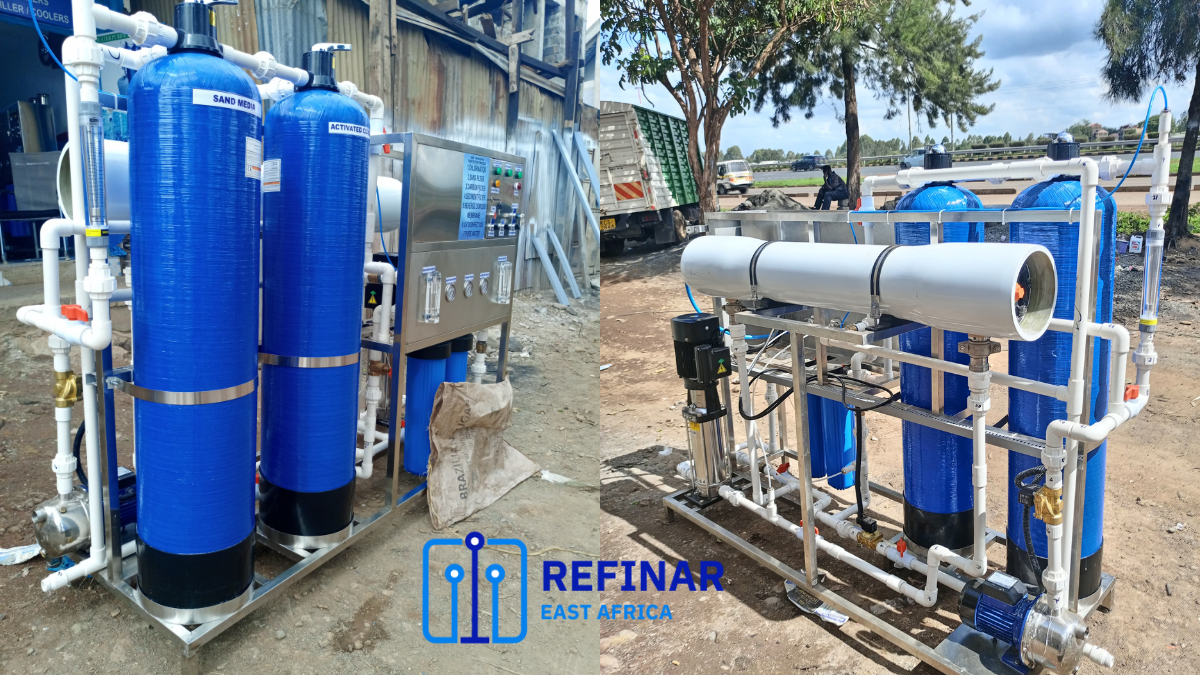Reverse osmosis is a powerful and efficient technology of water purification that provides several benefits in the home, commercial, and industrial sectors. Understanding its mechanisms and applications underlines its importance in delivering clean, safe drinking water as well as its impact on fostering a better lifestyle.
RO water purifiers, with their ability to remove pollutants and toxins, remain a cornerstone in assuring access to high-quality, potable water for a variety of uses, leading to a more sustainable and healthier environment.
What is Reverse Osmosis (RO) in Water Purification?
RO is a water purification method that employs a semipermeable membrane to remove pollutants and toxins from water. It works by applying pressure to the membrane, forcing water molecules through while leaving contaminants, dissolved solids, and minerals behind.
How does a reverse osmosis water purifier work?
RO water purifiers employ a multi-stage filtration system in which water goes through sediment filters, carbon filters, and a semipermeable membrane. The membrane captures impurities such as lead, fluoride, chlorine, and dissolved solids, resulting in pure water.
What contaminants does a reverse osmosis water purifier remove?
Reverse osmosis systems effectively remove impurities such as heavy metals (lead and mercury), dissolved solids, chlorine, fluoride, pesticides, bacteria, viruses, and other dangerous things, resulting in clean, safe drinking water.
What Are the Benefits of Using Reverse Osmosis Water Purifiers?
- Removal of Contaminants: RO systems provide high-quality, purified water by removing a wide range of impurities.
- Improved Taste and Odor: They enhance the taste and smell of water by eliminating unpleasant odors and flavors.
- Healthier Drinking Water: RO purifiers offer safe and healthy drinking water by removing harmful substances.
- Cost-Effectiveness: Long-term use reduces the need for bottled water, saving money over time.
How do you maintain a reverse osmosis water system?
It is essential to perform routine maintenance. This involves changing filters as specified by the manufacturer, disinfecting the system, and doing frequent performance checks. Proper maintenance increases the life of the RO system and keeps the water quality high.
How to Choose the Right Reverse Osmosis Water Purifier?
Consider factors such as water quality, daily water usage, system capacity, available space, and certification standards. At Refinar East Africa, We take pride in offering a diverse range of reverse osmosis water purifiers, each tailored to various capacities. Our lineup includes options for 250 liters per hour, 500 LPH, 1,000 LPH, 2,000 LPH, 4,000 LPH, 5,000 LPH, 8,000 LPH, and 10,000 LPH.
Are Reverse Osmosis Water Purifiers Suitable for Every Situation?
Refinar East Africa RO systems are extremely effective for providing high-quality purified water to homes, companies, and industries. They are suitable for applications such as drinking, cooking, cleaning, bathing, irrigation, industrial activities, beverage production, and water vending. They can deliver clean and safe water that meets Kenya Bureau of Standards (KEBS) standards.
Where to Buy Reverse Osmosis water purifier in Kenya
When it comes to buying a top-notch Reverse Osmosis system in Kenya, look no further than Refinar East Africa! We’re your go-to destination for high-quality water purification systems that guarantee clean and safe drinking water.
Connect with us via phone at 0707075702 or drop us an email at info@refinareastafrica.com to explore our diverse range of RO water purifiers. Our products are designed to cater to your specific needs, ensuring you get the best solution for clean water in your home or business.


